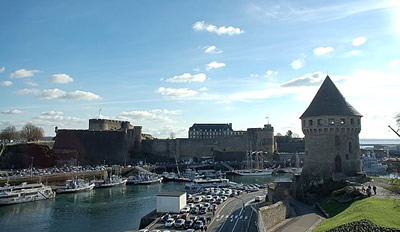 |
| city of Brest - nowdays |
The Council of Brest took place in the city of Brest, in modern-day Belarus, on June 1, 1596. It produced a “union of the churches,” an agreement between the Roman Catholic Church and Eastern Orthodox Christians who lived in modern-day Belarus, Poland, and Ukraine.
During the 16th century, a large number of Eastern Orthodox Christians found themselves living within the expanding Polish-Lithuanian Commonwealth. The Church of Kiev, historically a center of Byzantine Christianity, had avoided formally breaking ecclesial communion with either Rome or Constantinople after the Great Schism of 1054.
The leader of this church, Metropolitan Isidore, had been an active participant in the Council of Florence (1438–39), which sought the reunion of all the Eastern Churches with Rome. In much of the Polish-Lithuanian Commonwealth, memory of the Council of Florence Union continued to guide church relations. For example, there are a number of extant letters of complaint between Kiev and Rome that refer to the directives of the Council of Florence.
  |
Metropolitan Michael (Ragoza) of Kiev and a number of his colleagues began negotiations with Roman Catholic authorities and King Sigismund III of Poland in 1594. The Orthodox Church hierarchy wished to have the protections and privileges enjoyed by the Roman Catholic hierarchy.
The Orthodox were facing discrimination and pressure from the local Protestant and Roman Catholic landholders and nobility. The hierarchs wished protection from these forces, and the Polish king wished to lessen the growing influence of Moscow upon the Orthodox faithful. The king promised the Orthodox hierarchs the same privileges the Roman Catholic hierarchs received.
He also promised to preserve the Orthodox faith, rituals, and customs. These guarantees were proclaimed by the king on August 2, 1595. Pope Clement VIII accepted the union with additional conditions. The Orthodox hierarchs accepted the agreement at a subsequent synod held in Brest in 1596.
While the Union was accepted by the bishops of Vladimir, Lutsk, Polotsk, Pinsk, and Kholm, it was rejected by the bishops of L’viv and Przemysl (ironically two of the centers of the Greek Catholic Church today) and numerous Orthodox monastics and laypeople. These laypeople formed religious brotherhoods led by Cossacks opposed to the Union and sought new Orthodox bishops from Constantinople.
The strongest reason for opposition to the Union was the belief that such an agreement would lead to the destruction of the autonomy of the Kievan Church and restrictions on its traditions, liturgy, and faith. Sadly all of these consequences eventually came to pass.
The success or failure of the Union was largely based on the strength of the Polish-Lithuanian Commonwealth, and later the Kingdom of Poland. After the partitions of Poland by Prussia, Russia, and Austria, the Union was violently abused under the Russian Empire. The Union continued to prosper within the Austrian Empire, however, and became centered in the Galician capital of L’viv.
Today the largest of the Eastern Catholic Churches, the Greek Catholic Church in Ukraine (or Ukrainian-Greek Catholic Church), is the successor of the Union of Brest. Fifty years later, another agreement called the Union of Uzhorod, uniting the Orthodox Church of Mukachevo with the Roman Church, was extensively based on the Union of Brest.